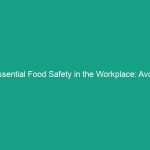Introduction
Good morning team,
Today, we’re diving into a crucial topic that impacts our Safety and efficiency at work: double-checking critical tasks. Why is this so important? Because human error can lead to significant risks, from minor accidents to severe incidents that could harm us or our colleagues. By emphasizing the importance of double-checking our work, we can minimize these risks and ensure a safer workplace for everyone.
Understanding Double-Checking Critical Tasks
Double-checking critical tasks refers to the practice of reviewing our work to confirm its accuracy before considering it complete. This could involve verifying calculations, ensuring proper equipment usage, or cross-checking Safety protocols. The importance of this process in Workplace Safety cannot be overstated; it’s a simple yet effective method to catch mistakes that could lead to dire consequences.
Every day, we make countless decisions and perform various tasks. A small oversight can escalate into a major incident. Thus, understanding and implementing double-checking practices is vital to enhance our operational safety and efficiency.
A common misconception is that double-checking is a sign of incompetence. On the contrary, it demonstrates a commitment to quality and safety. It’s not just about verifying our work; it’s about fostering a culture of accountability and thoroughness.
Key Hazards, Risks, and Safety Considerations
Human error can manifest in numerous ways, from misjudging distances when operating machinery to overlooking Safety Gear. These errors can have immediate and far-reaching consequences:
- Injury to personnel: A missed safety check could lead to accidents, causing injuries to ourselves or others.
- Equipment damage: Errors in Operation can result in costly repairs or replacements.
- Project delays: Mistakes often lead to rework, delaying project timelines and affecting productivity.
- Compliance issues: Failure to adhere to safety Regulations can result in legal penalties and damage to the company’s reputation.
Ignoring the need for double-checking can lead to these Hazards becoming a reality. Therefore, recognizing the importance of this practice is essential for our safety and the safety of our colleagues.
Best Practices, Procedures, & Actionable Advice
Implementing double-checking Procedures can greatly reduce the risk of human error. Here are some Best Practices to consider:
1. Create a Checklist
Develop a standardized checklist for critical tasks. This checklist should outline each step of the process, ensuring nothing is overlooked.
2. Pair Up for Double-Checking
Whenever possible, work in pairs. One person can perform the task while the other reviews it. This collaborative effort often catches errors that might be missed individually.
3. Take Breaks Before Reviewing
After completing a task, take a short break before reviewing it. This helps refresh your mind and allows you to catch mistakes with a clearer perspective.
4. Use Technology to Assist
Leverage technology tools that can assist in double-checking tasks. For example, software can track changes and highlight discrepancies, making it easier to catch errors.
5. Conduct Regular Training
Engage in regular training sessions focused on double-checking techniques and the importance of safety protocols. The more we practice, the more intuitive these checks become.
Real-World Example
Consider a recent incident where a team failed to double-check their equipment settings before a critical operation. The result was a malfunction that led to significant downtime and repair costs. By implementing a double-checking protocol, this situation could have been easily avoided.
Regulations, Standards, and Compliance
Adhering to safety regulations and industry Standards is crucial in minimizing risks associated with human error. Organizations like OSHA (Occupational Safety and Health Administration) provide guidelines that emphasize the need for thorough checks and protocols.
Compliance with these regulations not only protects employees but also safeguards the organization against potential legal actions and financial penalties. Understanding and implementing these standards is a shared responsibility that ensures a safer workplace.
Employee Engagement & Discussion
Now that we’ve discussed the importance of double-checking critical tasks, let’s open up the floor for discussion. Here are some questions to consider:
- What safety challenges have you encountered related to double-checking tasks?
- Can you share an experience where double-checking saved you from making a mistake?
- What other strategies can we implement to ensure we’re effectively double-checking our work?
Your insights and experiences are invaluable in shaping our safety culture. Let’s learn from each other and work together to enhance our practices.
Conclusion & Key Takeaways
To summarize, double-checking critical tasks is a vital practice that can significantly reduce the risks associated with human error. By following Best Practices, adhering to regulations, and fostering an open dialogue about safety, we can create a more secure Environment for ourselves and our colleagues.
Let’s commit to prioritizing safety in our daily operations. Remember, it’s not just about getting the job done; it’s about doing it safely and effectively. Thank you all for your attention and dedication to making our workplace safer.


